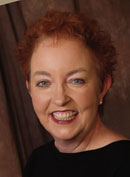 American photographer Edward Weston once said, “Photography to the amateur is recreation, to the professional it is work, and hard work, too, no matter how pleasurable it may be.” Tim Surratt can attest.
American photographer Edward Weston once said, “Photography to the amateur is recreation, to the professional it is work, and hard work, too, no matter how pleasurable it may be.” Tim Surratt can attest.
Tim, advertising manager for ETC of Henderson Inc., a Henderson, N.C. floor pad and mop manufacturer, spends about 15 hours of his free time each week immersed in taking and processing photographs.
“I taught myself photography and designed and built my own darkroom,” says Tim. “From there, I started teaching photography classes at the local community college.”
However, he quit teaching the classes when digital cameras became fully entrenched.
“When digital photography came around, it became difficult to teach the course,” he says. “It seemed it was more about teaching students to read their user manuals than about photography.”
Unlike most of us, Tim doesn’t use a “point and shoot” camera. His camera is a single lens reflex camera that “doesn’t hang around your neck very easily.”
Tim has been taking photographs as a hobby since the mid-1970s. In 2003, he switched from film to digital photography, a move he was hesitant to make.
“As an art form, I always felt like the darkroom was the creative part of photography,” says Tim. “With film, in snapping the picture you create a ‘latent image’ (one that’s present but not visible). The image doesn’t come out until it goes through the appropriate darkroom procedures involving things like chemistry and temperatures. Digital photography took me off guard, because I didn’t realize the possibilities that exist with it.”
But while processing the images on his computer, Tim recaptured the artistry involved.
“It’s sort of like processing the film,” he says. “You bring the image into the computer, and you can play with exposure, color saturations and de-saturations. It’s not so much manipulating what’s in the picture, but rather, working with tonal qualities, sharpness and exposure.”
Other advantages of digital photography, according to Tim, are being able to keep the photos you like and delete the rest, as well as being able to store photos on a computer hard drive, instead of in boxes.
Recently, Tim has started to take photos of people for a friend who is putting together a children’s book. However, this experience doesn’t mean he’s available for weddings. After helping a photographer with weddings one summer, Tim was adamant on never doing another wedding gig.
Tim is passionate about the technical aspects of photography. He believes that “composition is primary” and one must follow the “rule of thirds” (in which you divide a picture into thirds horizontally and vertically, giving you four intersections similar to a tic-tac-toe board).
“There’s a lot of technical knowledge and craftsmanship involved with using a camera,” says Tim.
Gretchen Roufs, an 18-year janitorial supply industry veteran, owns a marketing and public relations company in San Antonio. To suggest someone you think should be featured in “Freetime,” contact her at Gretchen@GretchenRoufs.com.

 Celebrating BSCAI's 60th Anniversary eBook
Celebrating BSCAI's 60th Anniversary eBook The Down and Dirty on Cleaning in Virus Season
The Down and Dirty on Cleaning in Virus Season How Surfactant Use is Expanding in Commercial Cleaning
How Surfactant Use is Expanding in Commercial Cleaning